Under the bodywork of the Alfa Romeo ‘Alfetta’ – 70 years after it won the first ever F1 race

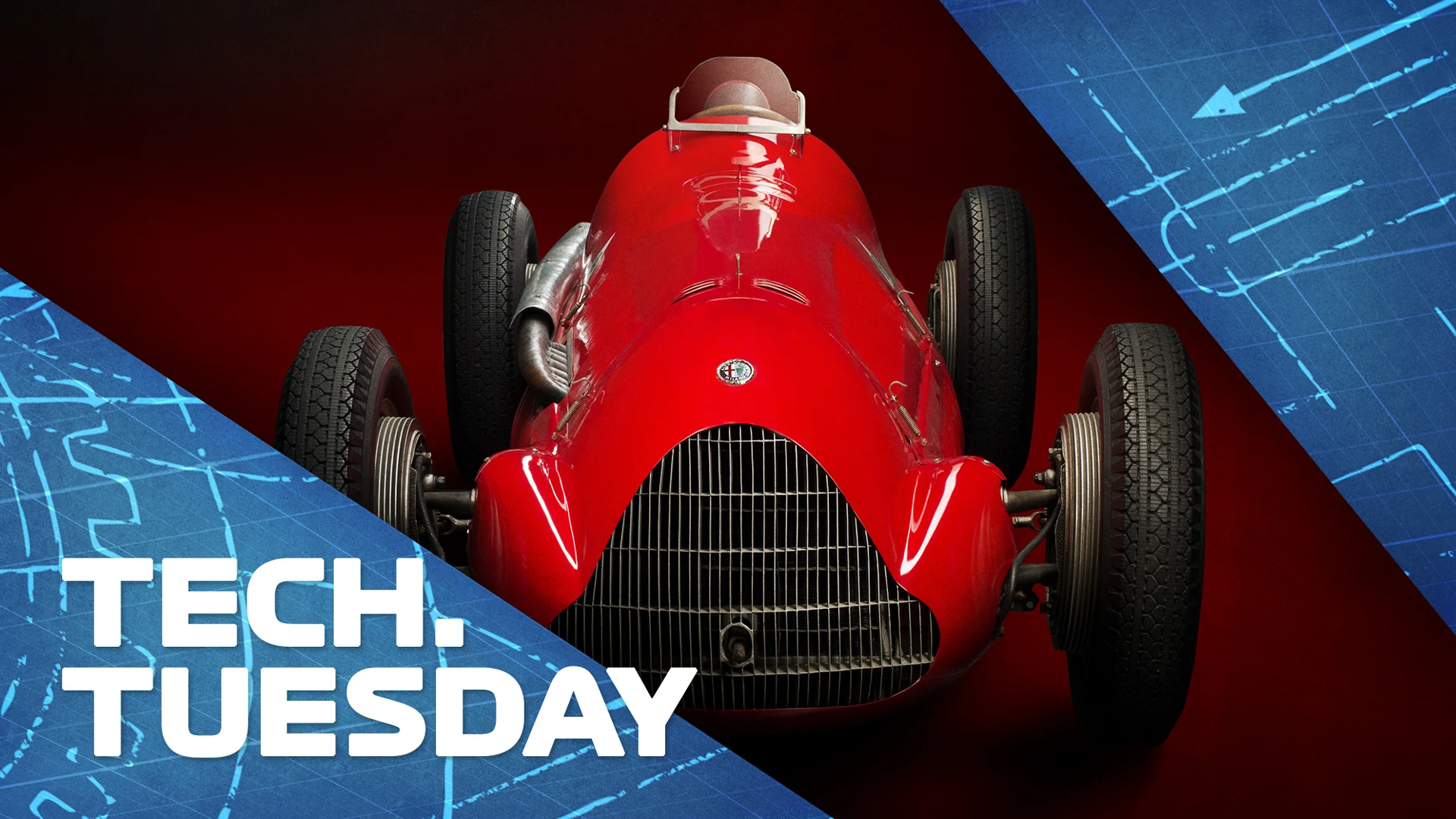
This Wednesday, May 13th will mark exactly 70 years to the day since the first ever round of the Formula 1 World Championship, the British Grand Prix at Silverstone. Giuseppe Farina won the race in an Alfa Romeo 158 'Alfetta' – and would go on to win the title that year. In this special Tech Tuesday, Mark Hughes takes you under the hood of F1's first race- and championship-winning car.
The Alfa-Romeo ‘Alfetta’ goes down in history as one of the most successful Grand Prix cars of all time. It won 47 of the 54 races in which it was entered between 1938-51, an extraordinary 13-year span which encompassed the first two FIA F1 World Championships of 1950 (with Giuseppe Farina) and ’51 (with Juan Manuel Fangio).
WATCH: Kimi Raikkonen drives the legendary Alfa Romeo "Alfetta"
Yet the car was not even conceived as a Grand Prix car and not even by Alfa Romeo! Enzo Ferrari’s Scuderia Ferrari team had sometimes been engaged by Alfa to field their Grand Prix entries, at other times the factory would field them, leaving the Scuderia to represent Alfa in lesser events.
By 1937 Alfa had bought an 80% stake in the Scuderia, which became essentially the racing arm of Alfa once more, but from their own workshop in Modena, not the Alfa factory near Milan.
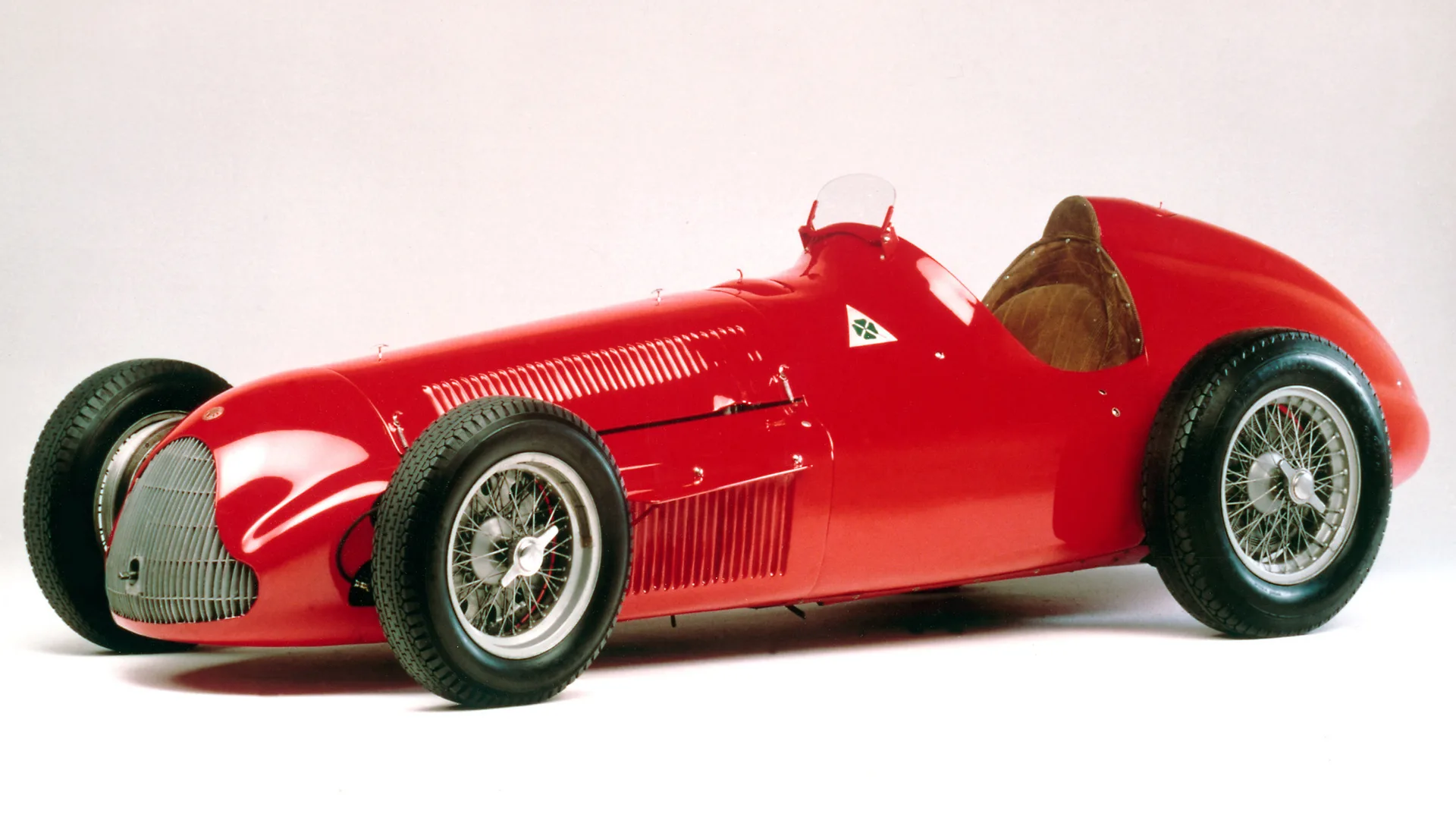
But Alfa were struggling from the mid-30s in Grand Prix racing against the massively-funded and technically advanced Mercedes and Auto Union teams. In ‘37 Enzo Ferrari proposed to Alfa that together they create a car for the class below Grand Prix racing, the voiturette category. This was for cars of 1.5-litre capacity rather than the 3-litres of Grand Prix racing. The modern equivalent would be Formula 2.
Alfa agreed to Ferrari’s proposal whereby Alfa would provide the engines and transmissions, Ferrari would construct the car to the design of Gioacchino Colombo, seconded to the Scuderia from the factory. These were the circumstances under which the ‘Alfetta’ (or ‘little Alfa’) took shape in Ferrari’s workshop.
WATCH: Top 10 – F1's cheekiest technical innovations
Colombo had originally envisaged a mid-engined car, inspired by the Grand Prix Auto Union. But Enzo Ferrari insisted: ‘No, the ox must pull the cart’. So that defined the layout as front-engined. What other hardpoints did Colombo have to work with?
Alfa would provide a straight-8 cylinder supercharged 1.5-litre engine that was essentially one-half of their V16 3-litre Grand Prix engine from the forthcoming Tipo 316 model. The straight-eight configuration defined the front of the car as long.
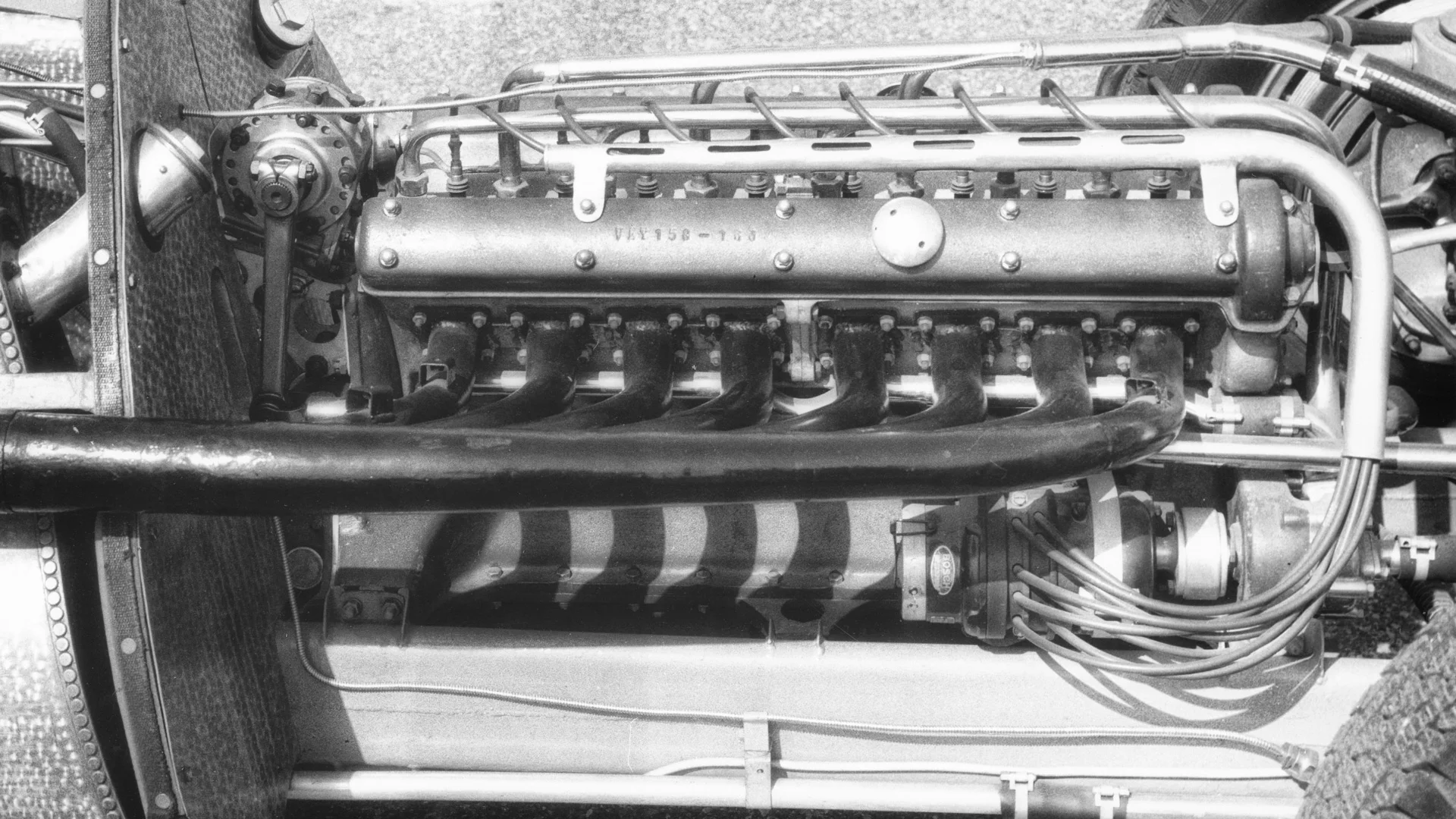
To offset the effect of that upon the weight distribution, Colombo decided to put the four-speed transmission at the rear, incorporating it into the axle itself with the differential, making a ‘transaxle’. Thus was formed the general outline of what would become a legendary car.
The German teams had introduced to Grand Prix racing many exotic new light metals – and Alfa were, by this time, following their lead.
READ MORE: From DAS to the double diffuser: 5 F1 innovations that caught rival teams napping
So the engine block of the Tipo 316 V16 – and therefore the Alfetta’s straight-eight derived from it – was constructed in Elektron, a magnesium alloy. In the Alfetta it was made up of two separate castings, beneath which was a common crankcase and sump in the same material, above it a common cylinder head. The two separate castings made the block more resistant to distortion.
To the side of the engine, turned by an auxiliary drive, was the supercharger. This compresses the air fed to the engine’s cylinders, multiplying its explosive potential, in much the same way as a turbocharger. But rather than being turned by exhaust gas, the supercharger’s blades are driven mechanically, from the engine.
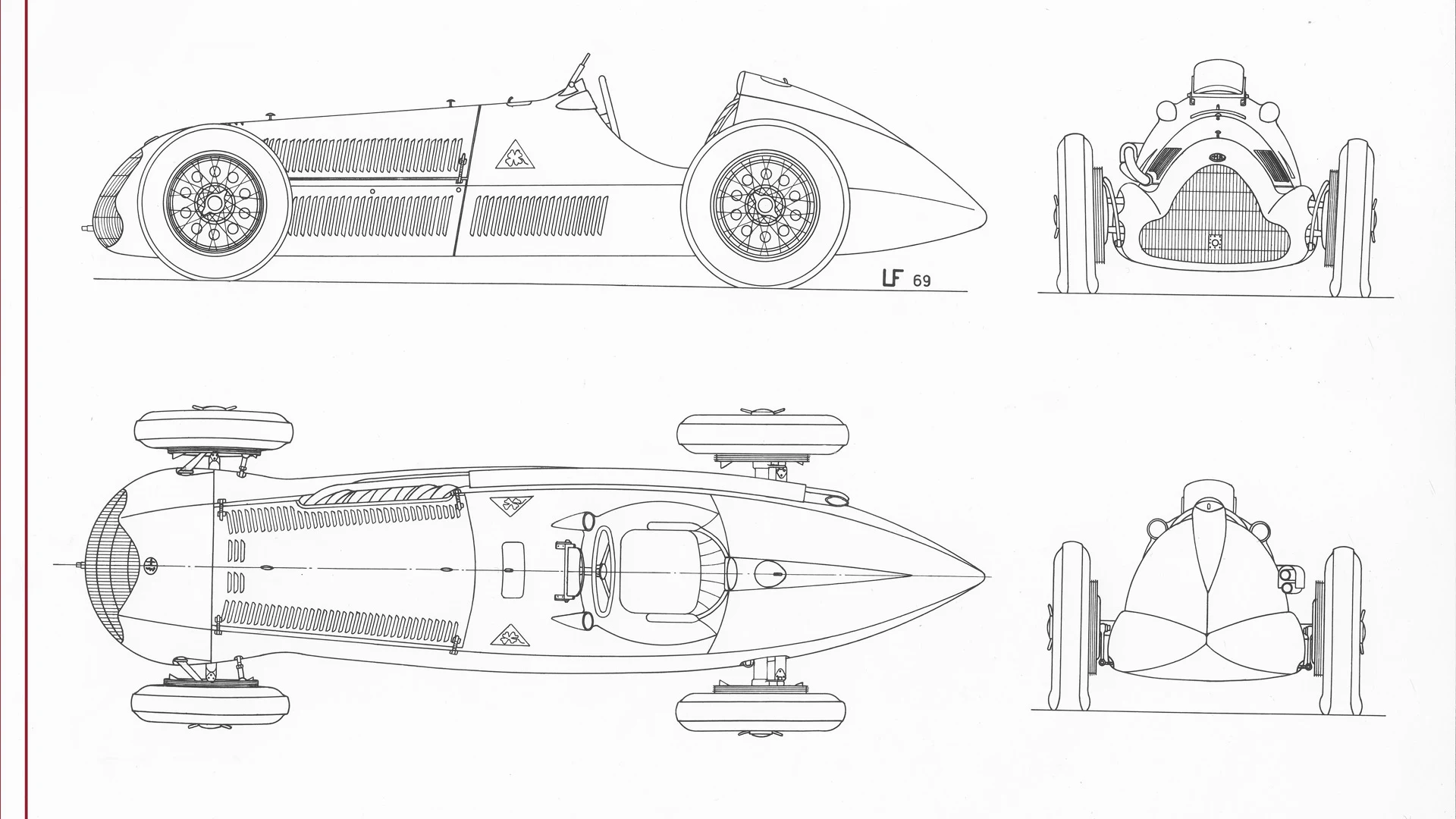
Superchargers had been introduced to the sport in the 1920s and traditionally had been mounted at the front of the engine, so as to take a direct drive from the crankshaft. The Alfa’s arrangement allowed the car to be more compact and made for less of a compromise in chassis stiffness around the front.
Thanks to the special metal technology that Alfa had mastered – and which would have been well in advance of the financial and technical resources of Scuderia Ferrari – the whole engine weighed just 165kg, which was remarkably light for an eight-cylinder of that time.
READ MORE: TECH TUESDAY: Under the bodywork of 1986’s best F1 car, the Williams FW11
The inlet and exhaust valves were operated by double overhead camshafts, allowing the valves to be splayed to the optimum angle for combustion. There were just two valves-per-cylinder.
Multi-valves had been introduced in racing engines before the First World War but did not give the overwhelming advantages of later improvements in bottom end engine design that liberated the multi-valve potential. This wouldn’t happen until the 1960s.
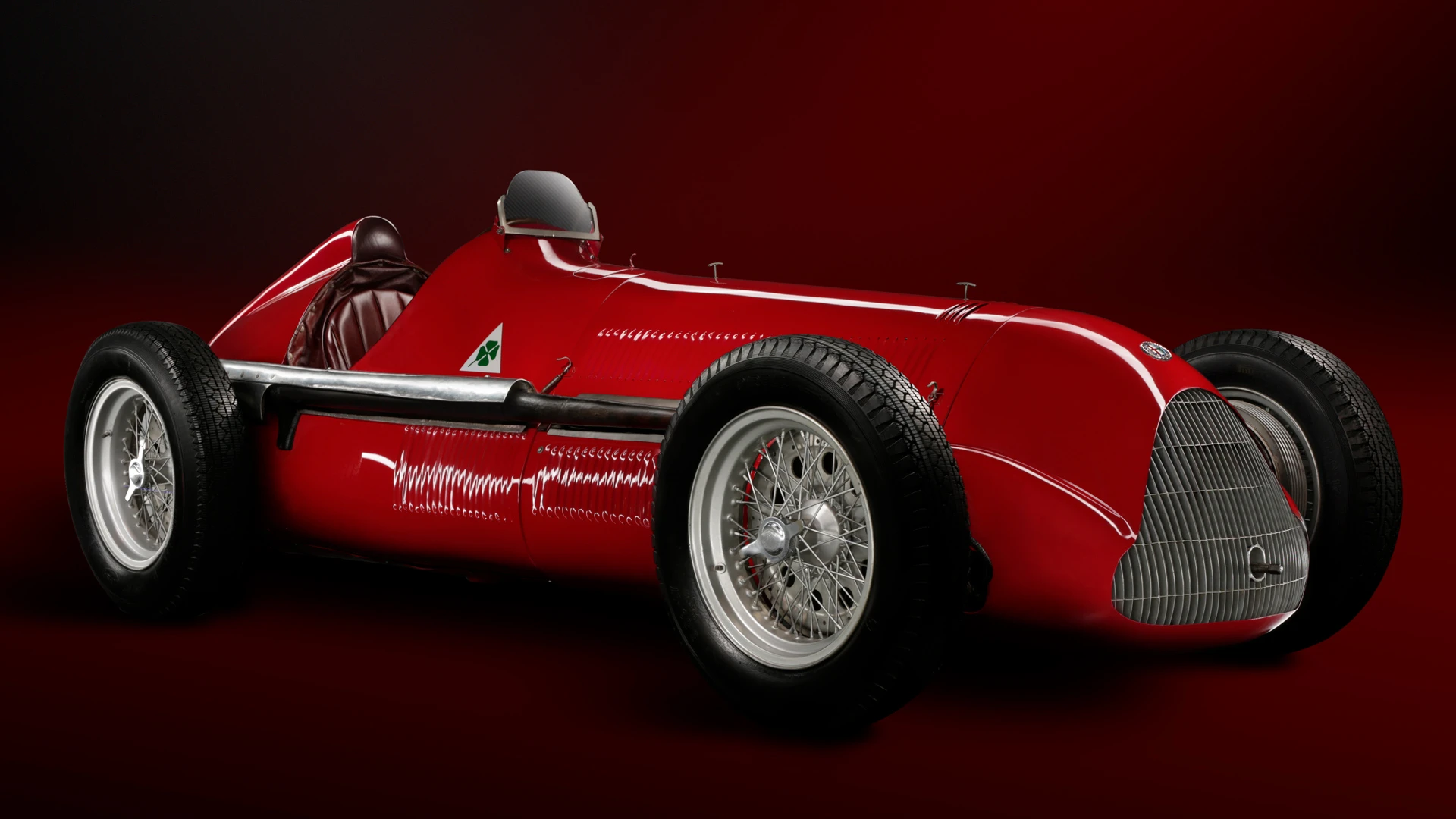
In its initial form, the Alfetta engine delivered 190bhp at 6,500rpm, with the supercharger set to give 17.6psi of boost.
The engine drove through a rear-mounted four-speed gearbox and the mechanicals were installed in a fairly simple tubular frame chassis around which the beautiful aluminium bodywork was formed.
The suspension was probably the least advanced part of the car – with a transverse leaf spring at the front and a swing axle at the rear supported by leaf springs.
READ MORE: TECH TUESDAY – Exploring the technological wizardry behind Williams' legendary FW15C
A swing axle – whereby a universal joint on either side of the transaxle connects each driveshaft – at least made the rear wheels independent of each other, but it had the disadvantage of providing no control of the wheel’s camber. In 1951 it was replaced by a more sophisticated de Dion system.
Before the completion of the first car, Alfa-Romeo decided to close down Scuderia Ferrari and move the whole operation to the Alfa factory under the new Alfa Corse banner for 1938.
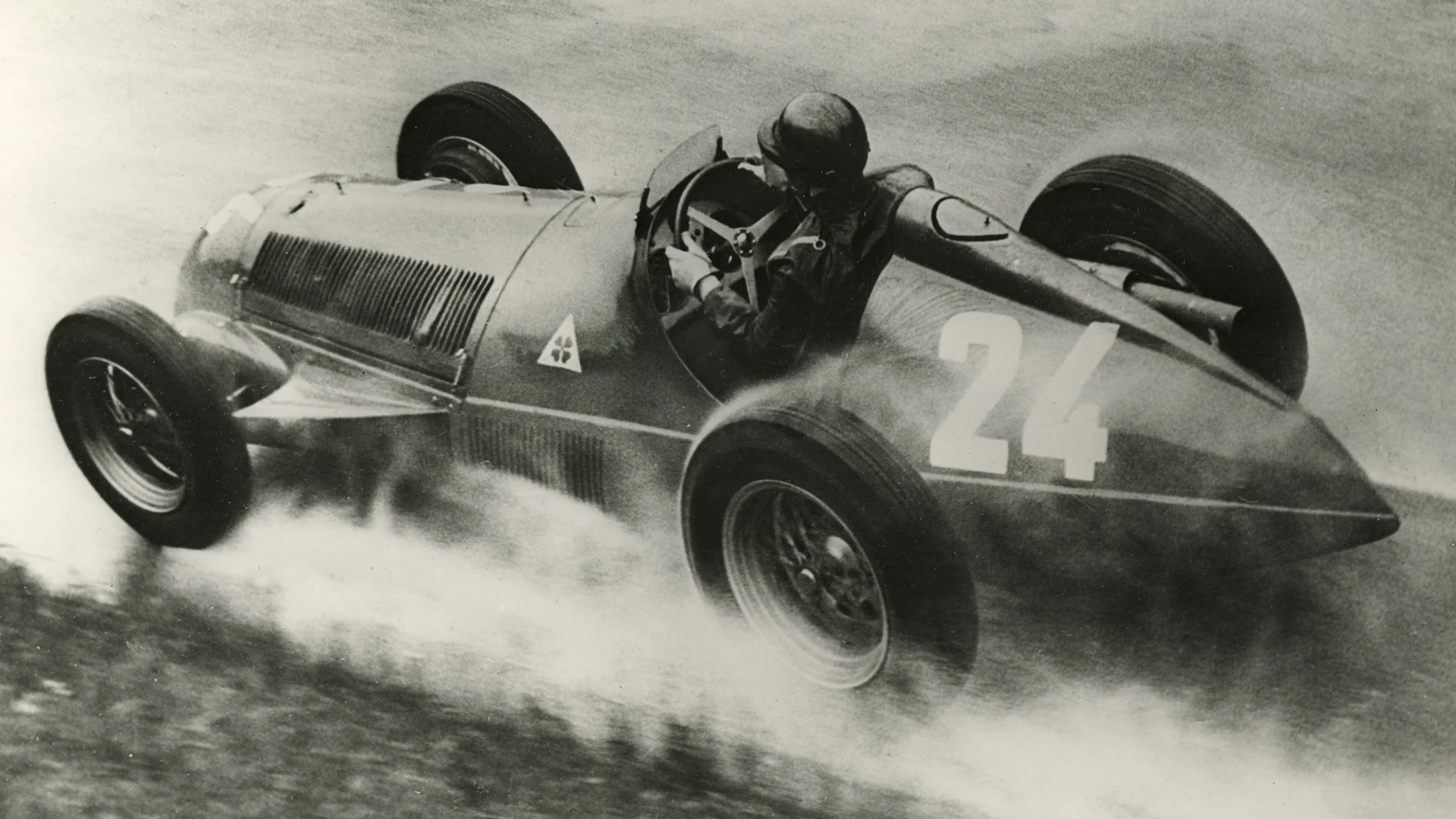
Enzo Ferrari was retained as team manager, but the Alfettas would race not with the Scuderia Ferrari badge, as planned, but the four-leaf clover of racing Alfa-Romeos.
Enzo remained only for a few months before falling out with the management. His severance terms prohibited him working with another manufacturer for the next six years and did not allow any ‘Ferrari’ car.
READ MORE: Under the bodywork of the Ferrari 312B3 on the anniversary of Niki Lauda's first F1 win
The Alfa factory Alfettas made their debut at the Coppa Ciano Junior race at Livorno in August 1938. Emilio Villoresi headed a team 1-2. The cars very rarely lost a race thereafter. But this was in the voiturette category.
Post-war, the governing body announced a new Grand Prix formula – for cars of 1.5 litres, supercharged, or 4.5-litres, naturally-aspirated. The old voiturette Alfas were therefore eligible as Grand Prix cars!
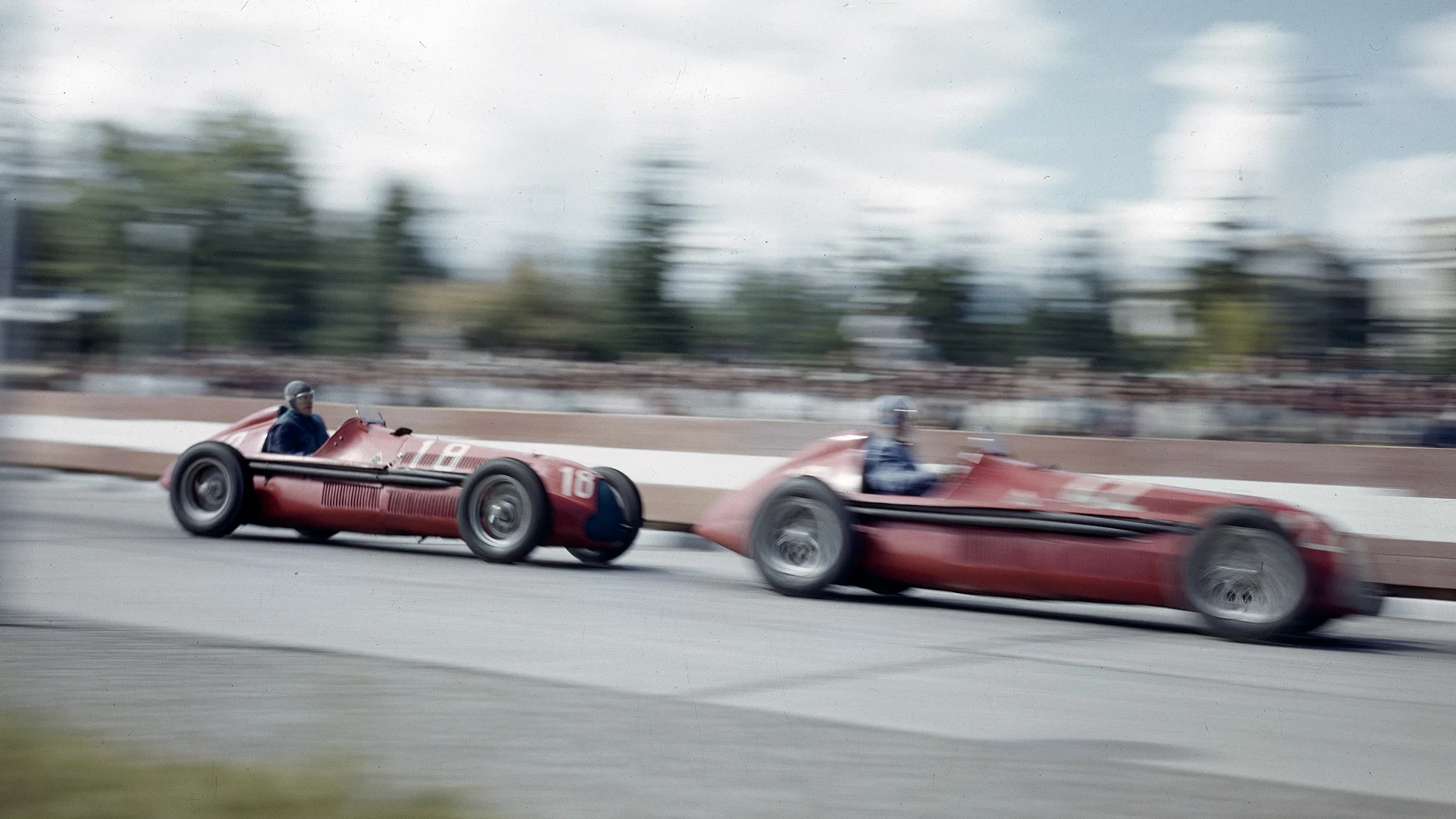
The Alfettas – which had been stored during the war in a cheese factory – were brought out once more and took part in the 1946 St Cloud Grand Prix near Paris. Jean-Pierre Wimille and Giuseppe Farina were both forced to retire with transmission failure, but the Alfas were not beaten again in the next five years! Through 1946, 47 and ’48, they were the dominant force in grand prix racing.
The car was developed steadily, with the power creeping ever upwards.
READ MORE: TECH TUESDAY – Under the skin of Schumacher's first Ferrari winner
Twin-stage supercharging arrived in late ‘46, boosting the power to 260bhp. In ’47 came a bigger supercharger and 310bhp. It was in one of these cars that the great Achille Varzi was killed while practising for the 1948 Swiss Grand Prix.
This, the subsequent death (in a Gordini) of Alfa’s other contracted star Wimille early in ’49 and difficult financial circumstances prompted Alfa not to compete in ’49 – leaving the way clear for Enzo Ferrari’s new marque to record their first Grand Prix victories with a car less sophisticated than the Alfetta he’d helped create.
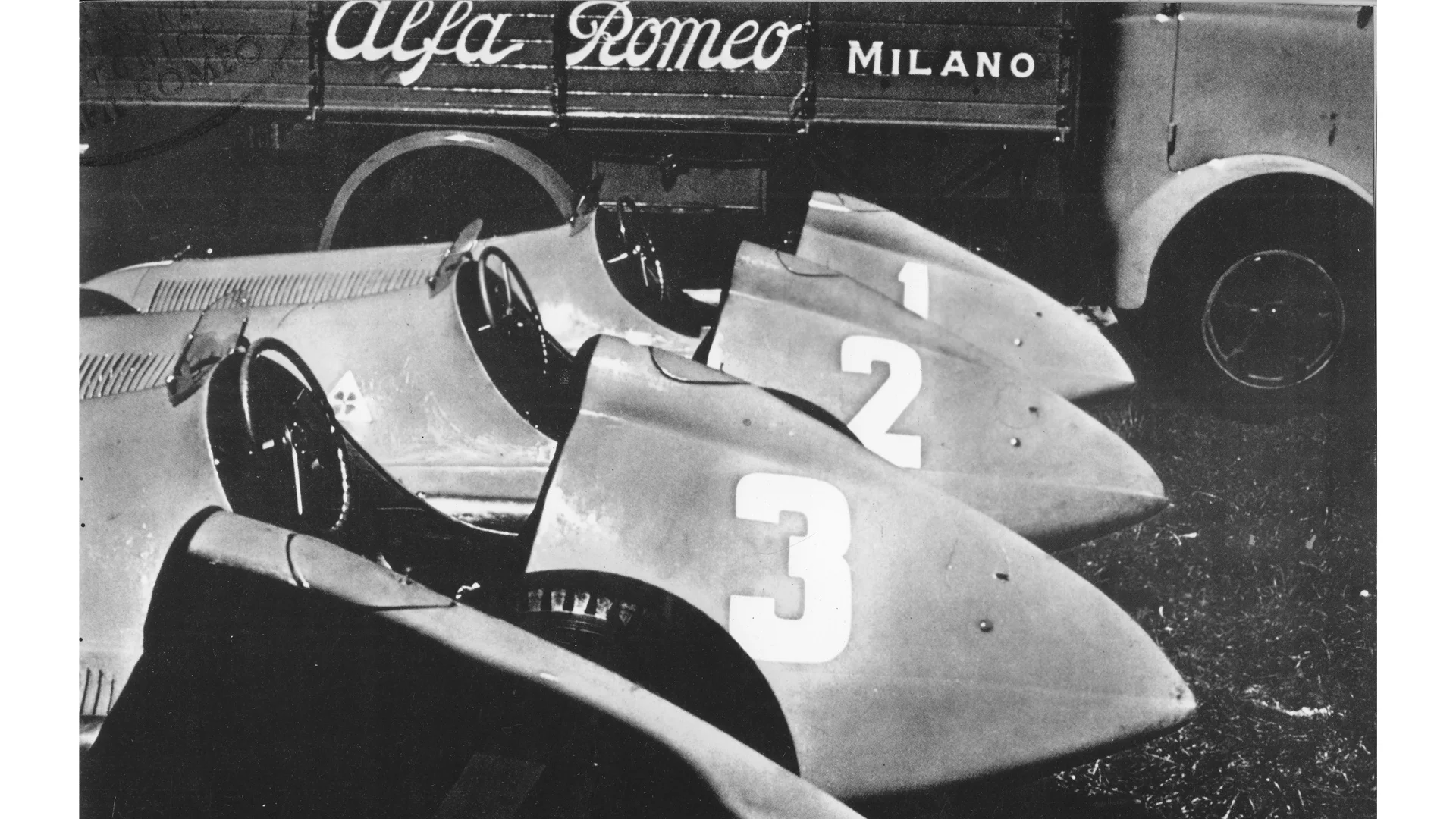
But for 1950, in the inauguration of a new World Championship and the easing of the company’s financial plight thanks to the implementation of America’s Marshall Plan, brought the Alfettas back out to play.
Further development had brought the power up to 350bhp, though this created such internal heat that the fuel had to be used for cooling as well as combustion – giving a hugely thirsty 1.5mpg.
Alfa had a new recruit in Juan Manuel Fangio, but it was the team’s incumbent star Farina who clinched that very first driver’s world title, thanks to a better reliability record than the generally faster Fangio.
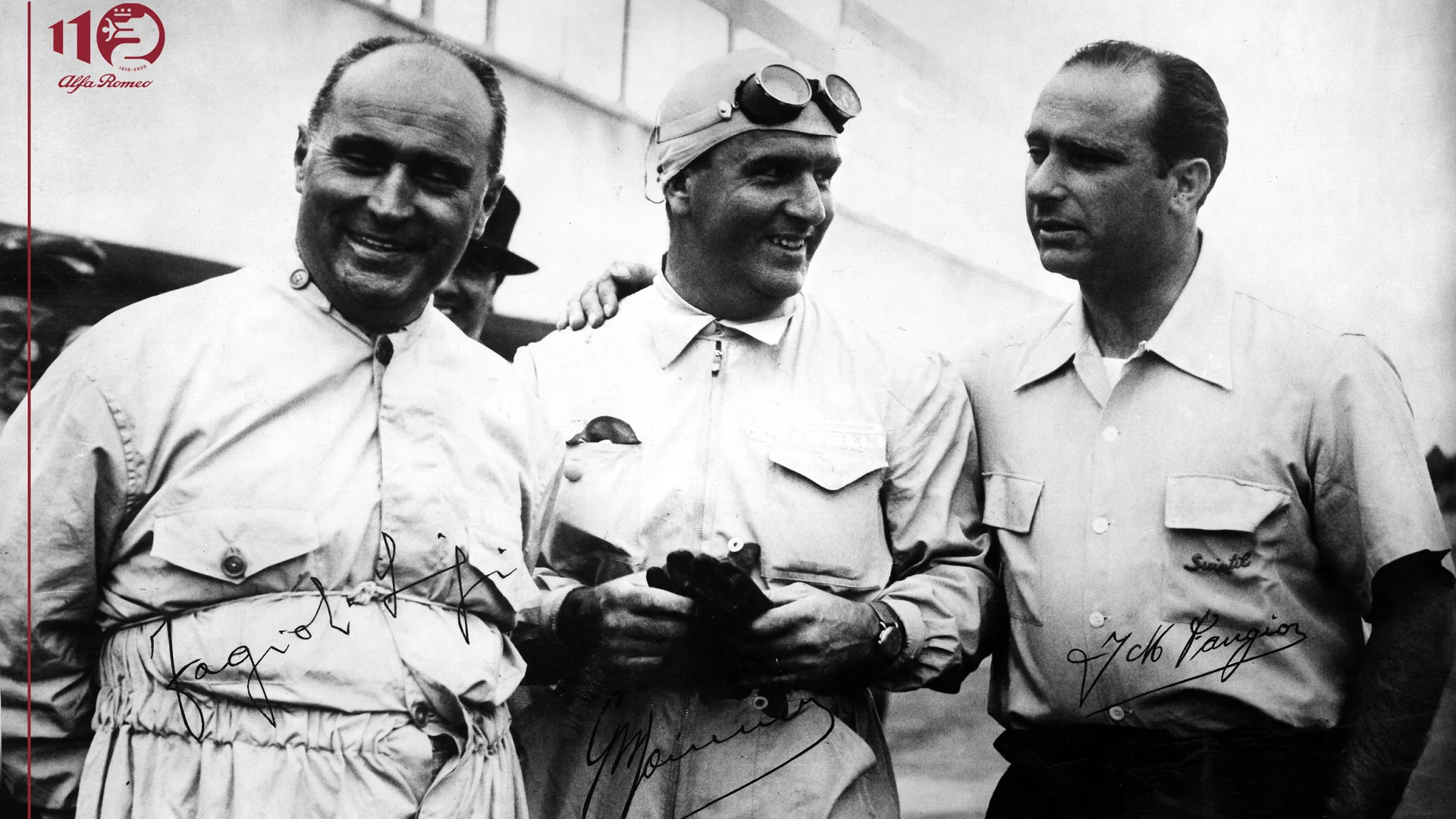
Eventually, the Alfa’s fuel consumption would prove to be its undoing.
Although Fangio secured the ’51 championship with the car, it was no longer unbeatable. The less thirsty non-supercharged 4.5-litre Ferrari finally defeated it at the British Grand Prix.
Enzo Ferrari famously wrote that it felt ‘as if I had killed my mother’. The Alfettas were retired at the end of the year and Alfa wouldn’t be seen again as a Grand Prix entrant until 1979.
READ MORE: From 1950 to 2019, why Silverstone still means so much to Formula 1
More on F1's 70th anniversary
10 fascinating facts about the very first F1 Grand Prix
PODCAST: Listen to Martin Brundle discuss the best cars he's driven from every decade of F1
Under the bodywork of the Alfa Romeo ‘Alfetta’ – 70 years after it won the first ever F1 race
Why is it called Formula 1 – and 12 other questions about the championship’s origins
1950 vs 2020: Cars, drivers, safety and pitstops – how F1 has changed in 70 years
.webp)
.webp)

.webp)
.webp)
